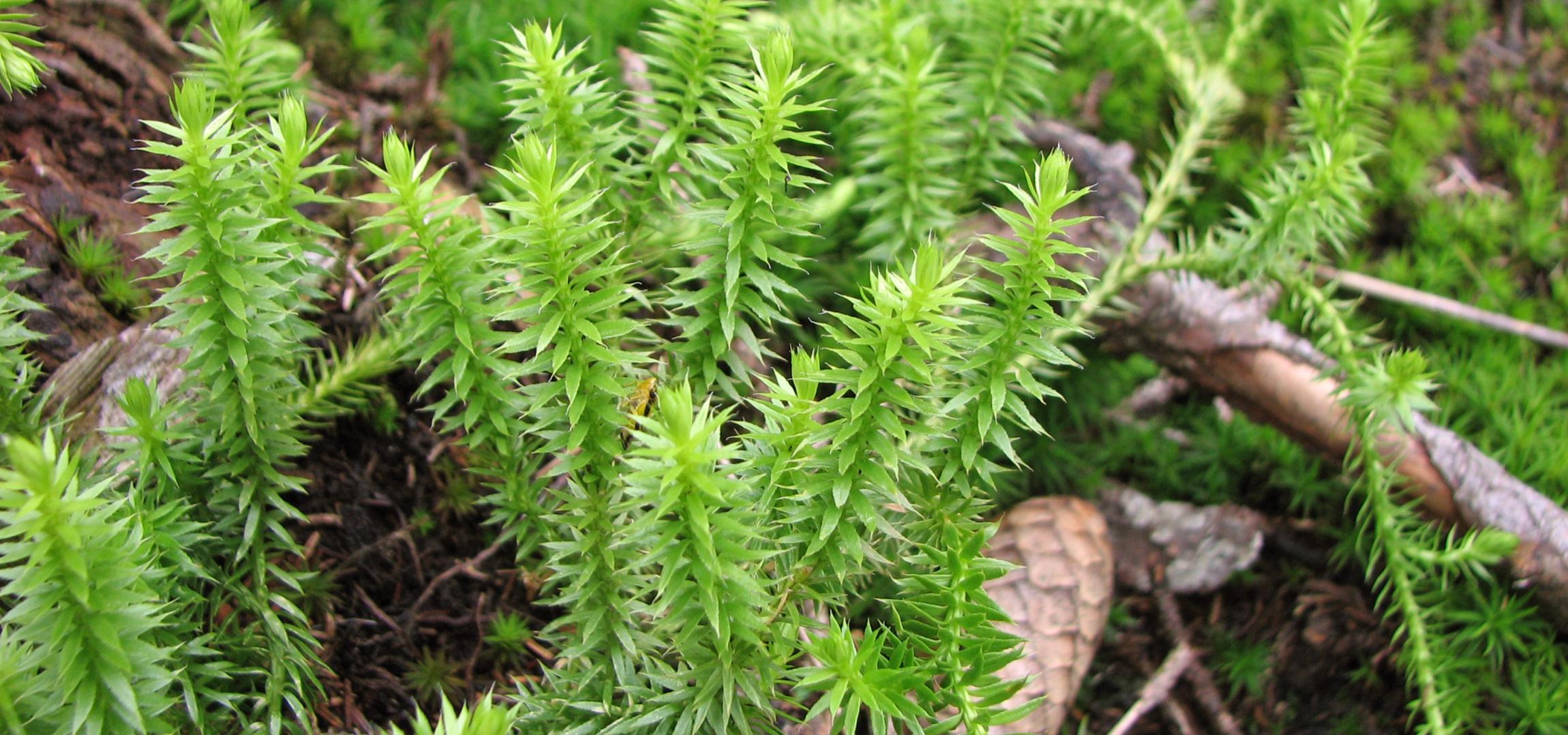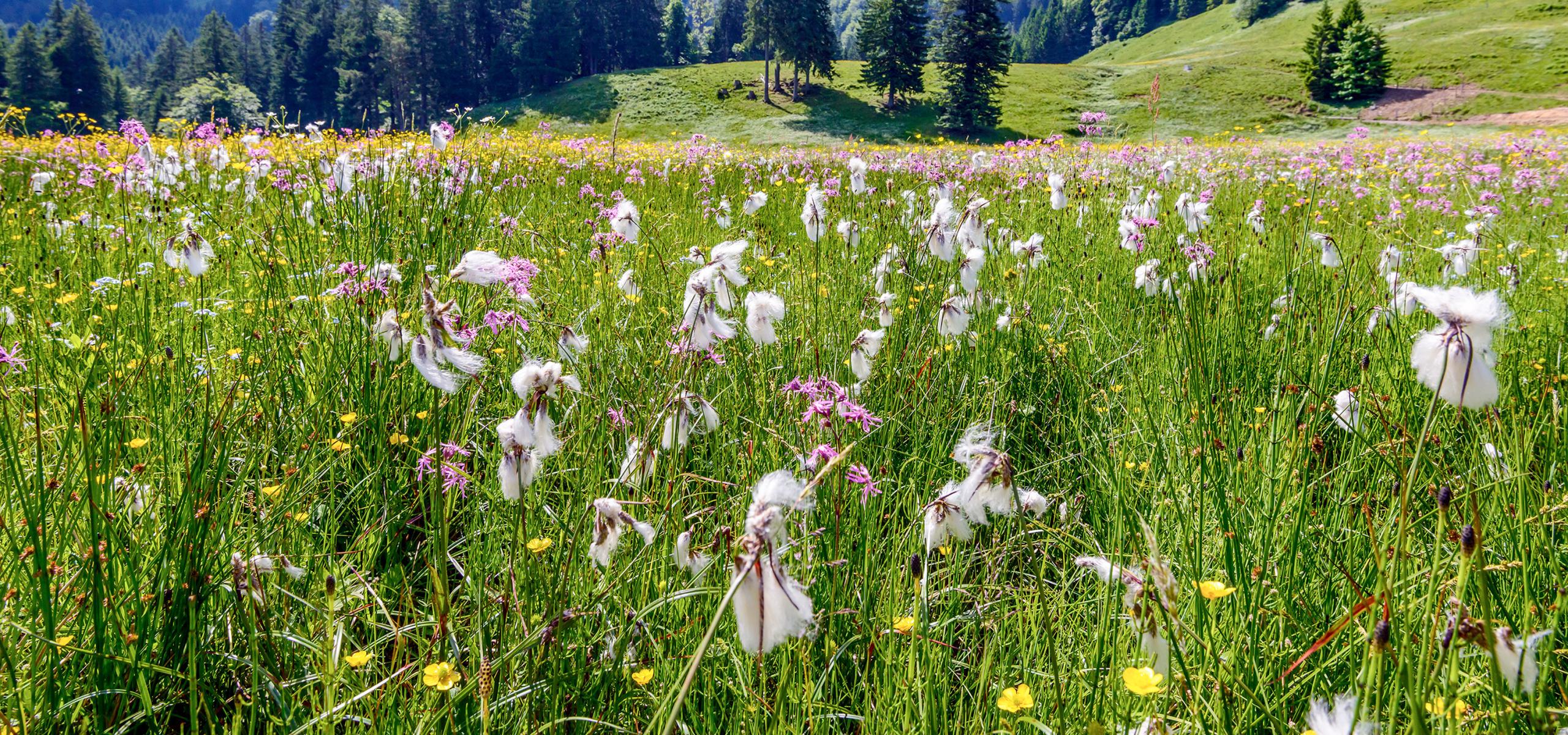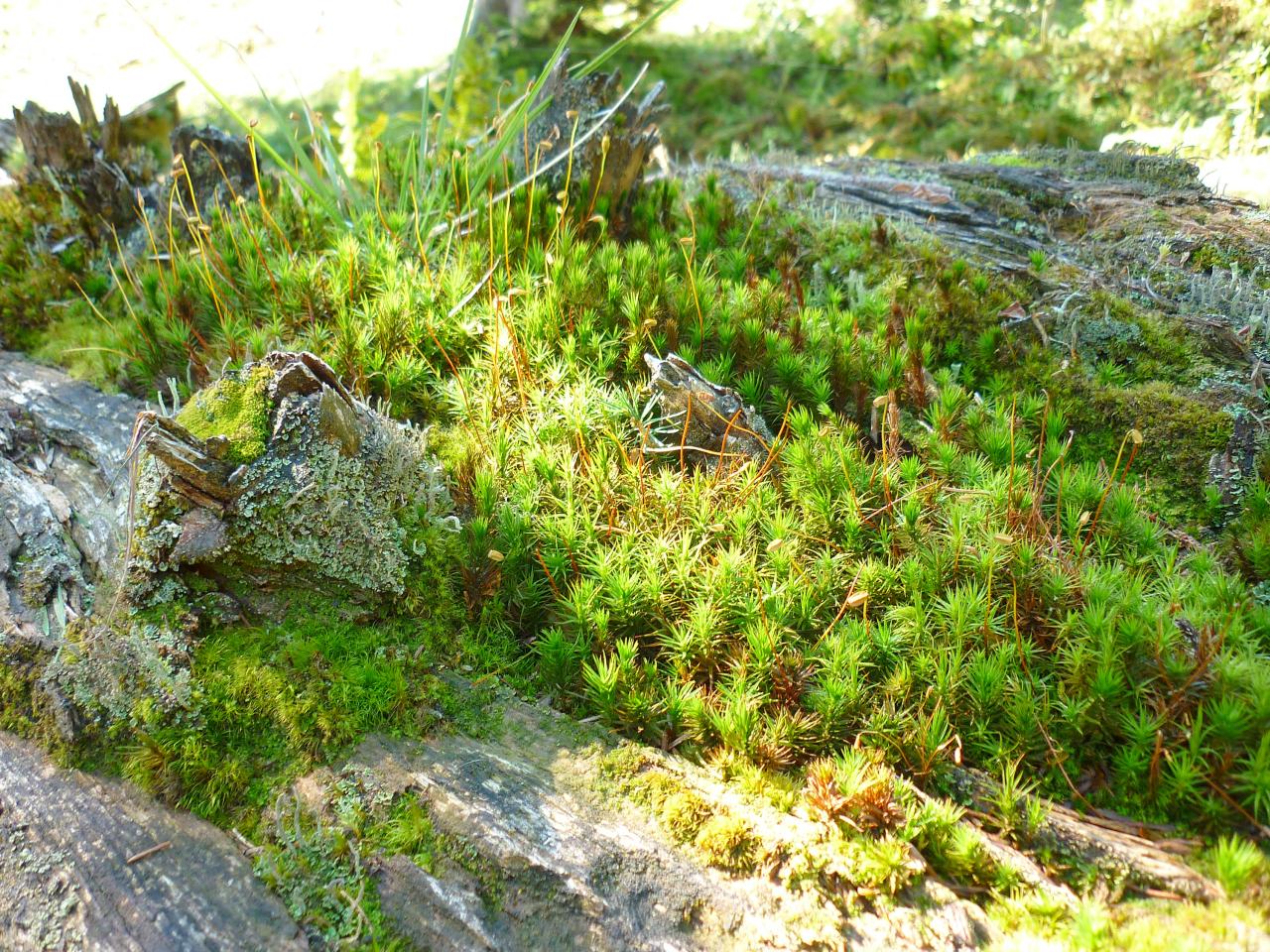Mosses
Anyone who has ever sat on soft moss cushions and been annoyed by wet patches afterwards will be all too familiar with an impressive property of moss: its ability to store water. The masters of water storage, peat mosses, can even store 30 times the amount of water. However, because mosses have no evaporation protection like higher plants, they like to grow in damp and shady locations. There are numerous mosses that use old trees and dead wood as a habitat. Some are even dependent on them and are therefore considered a sign of near-natural forests!

Bear rag
If you discover representatives of this group while hiking and don't take a closer look, you could easily think you're looking at a moss. Not only do they look similar, but they can also appear on the surface of stones and tree bark. However, unlike mosses, lycopods have real supporting and conducting tissue and therefore belong - like ferns and seed plants - to the vascular plants.
Humans have long made use of the healing powers of various species of lycopods. When applied to wounds, the spore powder of club m oss(Lycopodium clavatum) has a cooling and pain-relieving effect. However, most people are probably familiar with the yellow spore powder from various magic shows, as it contains many essential oils and is therefore highly flammable. If you bring it into contact with fire, you can create great flame effects with it.
Kalkalpen National Park There are 5 different species of lycopodium, the most common of which is the snake lycopodium(Lycopodium annotinum). Its name probably comes from the fact that its creeping shoots above ground can grow up to one meter long.
Species list lycopod in the Kalkalpen National Park |
|
German name |
Scientific name |
| Fir devil's claw | Huperzia selago |
| Alpine club moss | Diphasiatrum alpinum |
| Snake lycopod | Lycopodium annotinum |
| Club marmoset | Lycopodium clavatum |
| Alpine moss fern | Selaginella selaginoides |

Ferns
Ferns are among the oldest land plants and long ago formed huge forests together with lycopods and horsetails.
At first glance, all ferns look quite similar, but they differ in the pinnation of the leaves and the shape of the so-called "sori". These are small clusters of spores on the underside of the leaves that serve to spread. As ferns are well adapted to low light conditions and require moist soil conditions for their reproduction, they are often found in shady forests.
In the picture: The attractive hart's tongue fern likes to grow in the ravine forests of Kalkalpen National Park . This is a rather atypical fern, as its leaves are not pinnate but have entire margins. In favorable locations, its tongue-shaped leaves can grow up to one meter long!

Grasses
Many different grasses can be found in the meadows at Kalkalpen National Park , such as the pretty golden oat. Like many other grasses, its golden yellow panicle with fine spikes is spread out at flowering time to facilitate wind pollination. Grasses usually spread their pollen with the wind and therefore do not need colorful petals to attract insects.
Some grass species have also adapted to life in the forest. They tolerate browsing by game better than herbs and trees, as their growth zones are located close to the roots and not at the tips of the shoots. A very conspicuous sour grass in damp places in the forest is the sedge. As the largest native sedge, it forms 2 cm wide leaves and can grow up to 2 meters high.



